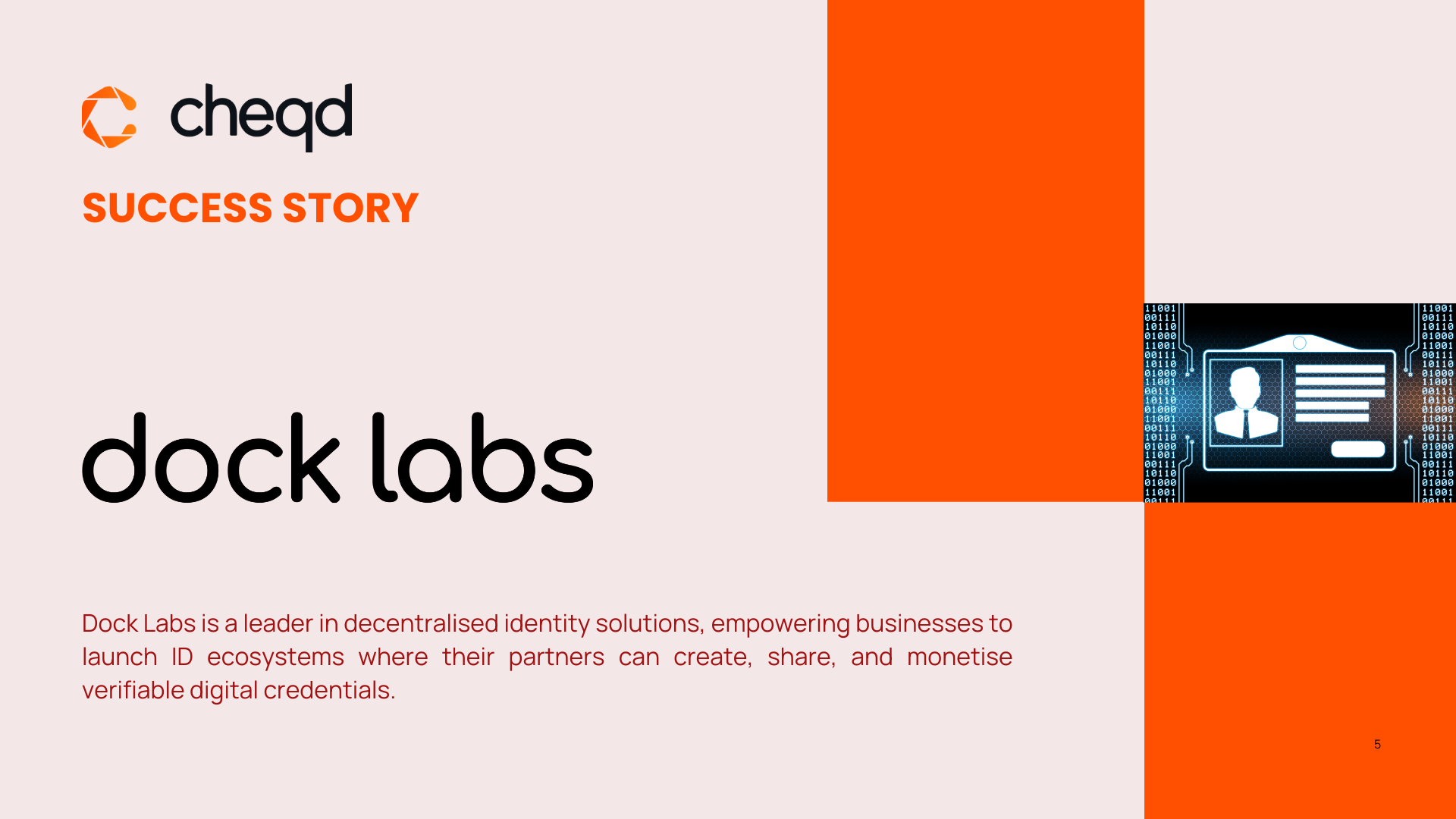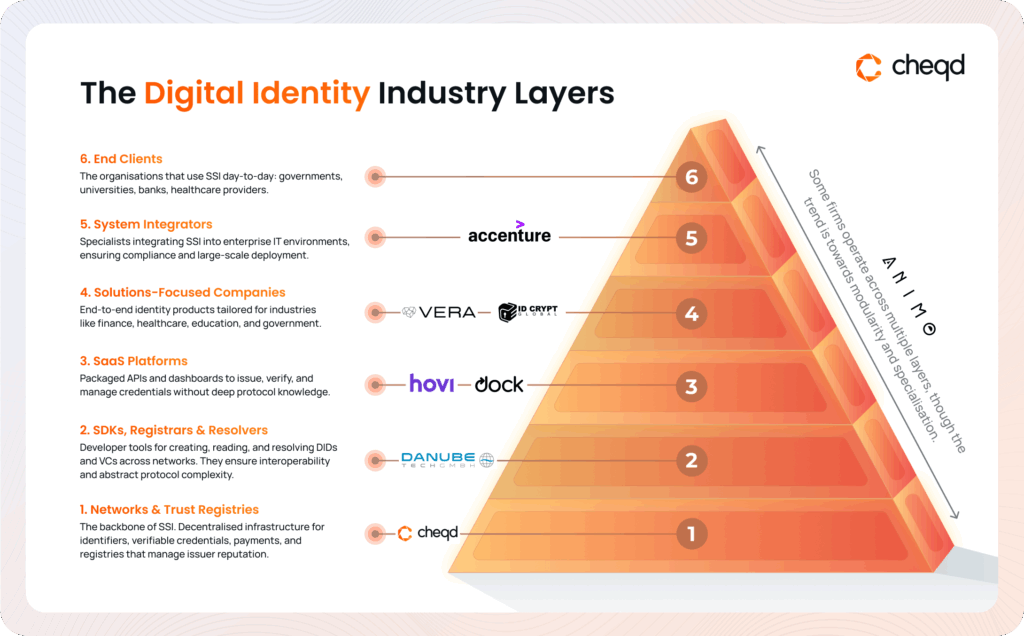Introduction
Dock Labs is a leading provider of decentralised identity and credentialing infrastructure, trusted by organisations across industries for its secure, compliant, and interoperable solutions. As the demand for Verifiable Credentials has grown, driven by both enterprise adoption and regulatory frameworks like eIDAS and EUDI, Dock Labs sought a more sustainable way to provide the underlying blockchain for its decentralised identity platform.
Challenges
Dock Labs initially ran its own blockchain network to issue and verify credentials. However, as the ecosystem matured, it became clear that keeping a separate ledger for publicly available resources resulted in expenses and operational overhead that distracted from their core mission of providing credential based solutions to organisations. The team at Dock Labs began evaluating external networks that could support their identity use cases without compromising on performance, security, or flexibility.
After an extensive internal review, Dock Labs identified cheqd as the optimal infrastructure partner.
The Solution: Migrating to cheqd
Technical and strategic alignment were key factors in Dock Labs’ choice to implement cheqd. The cheqd network provides purpose-built infrastructure for decentralised identity, offering features such as stable governance, great uptime, and flexible DID-linked resources, which are all critical components for real world credential ecosystems.
Dock Labs discovered throughout their study that cheqd’s open source codebase and public documentation were highly accessible. This is another determining factor of the shift since they can help speed up evaluation and deployment. Besides, the platform’s modularity and transparency gave Dock Labs full confidence in how cheqd operates under the hood.
One of the key enabling technologies for Dock Labs’ transition was DID Linked Resources (DLRs), a unique feature of cheqd that allows metadata and associated files (like credential schemas or status lists) to be published and resolved directly via DIDs. This feature is flexible and powerful enough to allow migration of all the purpose-built features that Dock Labs had previously managed on its own network. DLRs allowed Dock Labs to migrate their privacy-preserving accumulator based revocation registries to the platform while also allowing migration of Dock Labs’ on-ledger ecosystem registries. Even though the cheqd network already had implementations of revocation and trust registries, DLRs allowed custom implementations that meet Dock Labs’ specific requirements.
Beyond the technology, cheqd’s community team provided proactive, friendly support throughout the migration process. The engagement extended into Dock Labs’ developer ecosystem as well, where cheqd worked closely with contributors to ensure a smooth transition. In general, Dock Labs’ broader community has responded favourably, with developers expressing contentment with the switch to cheqd.
As a result, Dock successfully integrated cheqd into its blockchain SDK, now available on Dock’s public GitHub repository. This SDK allows developers to issue and verify credentials using cheqd infrastructure with the same intuitive tools they’re used to.
Outcomes and Impact
By shifting to cheqd for public shared resources, Dock Labs has achieved multiple wins:
- Reduced Costs & Complexity: Decommissioning its own ledger for public credentialing resources has significantly lowered Dock Labs’ infrastructure overhead, including a 60% reduction in AWS costs.
- Faster Implementation: Dock Labs was able to carry out the migration rapidly and with minimal friction because of cheqd’s open source tooling and documentation.
- Improved Developer Experience: Dock Labs’ developers now have a more robust and adaptable way of managing decentralised identity components thanks to cheqd’s DID Linked Resources and continuous support.
- Community Alignment: Feedback from Dock Labs’ developer ecosystem has been positive, recognising both the ease of integration and the benefits of working with an active, open identity network like cheqd.
- Increased Focus: Because the blockchain layer is being well managed by a trusted partner, Dock Labs can focus on growing their core business.
This partnership marks a strategic evolution in Dock Labs’ roadmap: focusing more on building innovative identity solutions while relying on scalable, community-supported infrastructure.
What the Founders Say
“Dock Labs migrating their revocation registries and trust registries onto cheqd’s DID-Linked Resources is a strong validation of our infrastructure. Their team leveraged the flexibility of our DLRs to build registries tailored to their needs. This is exactly why we built cheqd: to enable teams like Dock to focus on delivering real world credentialing solutions without the burden of maintaining their own ledger.”
— Fraser Edwards, CEO and Co-founder of cheqd.
“Our migration to cheqd marks a pivotal step in our journey. By moving to a shared identity network with robust community support, we’ve significantly reduced infrastructure complexity and unlocked more flexibility for our developers. Interoperability with other organizations using cheqd means our credentials can be trusted and used across a wider ecosystem. Most importantly, it allows us to double down on what we do best: helping organizations issue and verify trustworthy verifiable credentials at scale.”
— Nick Lambert, CEO, Dock Labs
Conclusion
By migrating to cheqd, Dock Labs streamlined its operations while improving its capacity to deliver trusted, compliant, and developer friendly credentialing infrastructure. The smooth migration lays a solid basis for both teams to continue shaping decentralised identity together while realising substantial cost savings such as a 60% reduction in AWS spend.
Contact cheqd at [email protected] if you are interested in exploring our trust and payment infrastructure.
Get in touch with Dock to [email protected]



